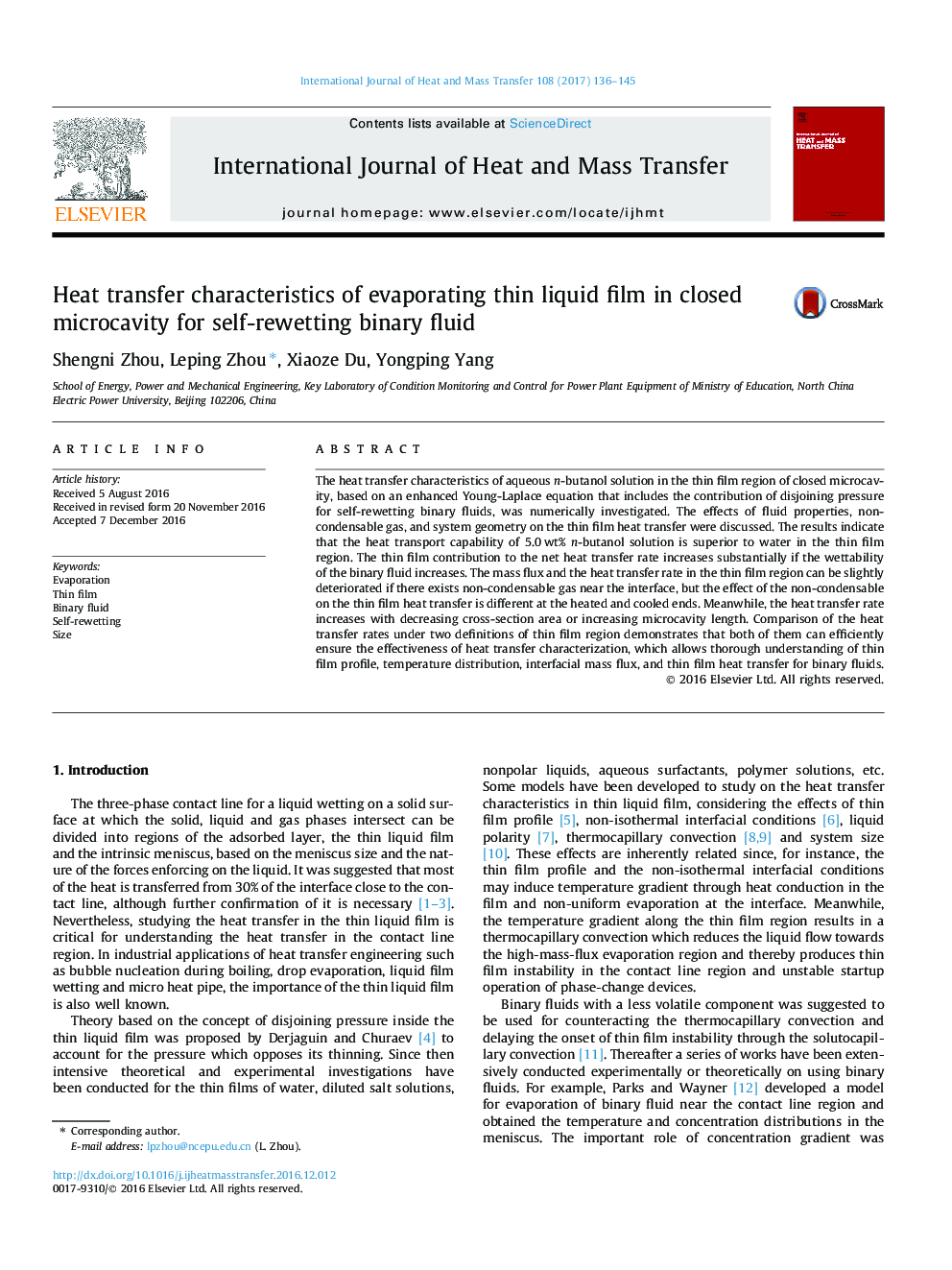| Article ID | Journal | Published Year | Pages | File Type |
|---|---|---|---|---|
| 4994264 | International Journal of Heat and Mass Transfer | 2017 | 10 Pages |
Abstract
The heat transfer characteristics of aqueous n-butanol solution in the thin film region of closed microcavity, based on an enhanced Young-Laplace equation that includes the contribution of disjoining pressure for self-rewetting binary fluids, was numerically investigated. The effects of fluid properties, non-condensable gas, and system geometry on the thin film heat transfer were discussed. The results indicate that the heat transport capability of 5.0Â wt% n-butanol solution is superior to water in the thin film region. The thin film contribution to the net heat transfer rate increases substantially if the wettability of the binary fluid increases. The mass flux and the heat transfer rate in the thin film region can be slightly deteriorated if there exists non-condensable gas near the interface, but the effect of the non-condensable on the thin film heat transfer is different at the heated and cooled ends. Meanwhile, the heat transfer rate increases with decreasing cross-section area or increasing microcavity length. Comparison of the heat transfer rates under two definitions of thin film region demonstrates that both of them can efficiently ensure the effectiveness of heat transfer characterization, which allows thorough understanding of thin film profile, temperature distribution, interfacial mass flux, and thin film heat transfer for binary fluids.
Keywords
Related Topics
Physical Sciences and Engineering
Chemical Engineering
Fluid Flow and Transfer Processes
Authors
Shengni Zhou, Leping Zhou, Xiaoze Du, Yongping Yang,
